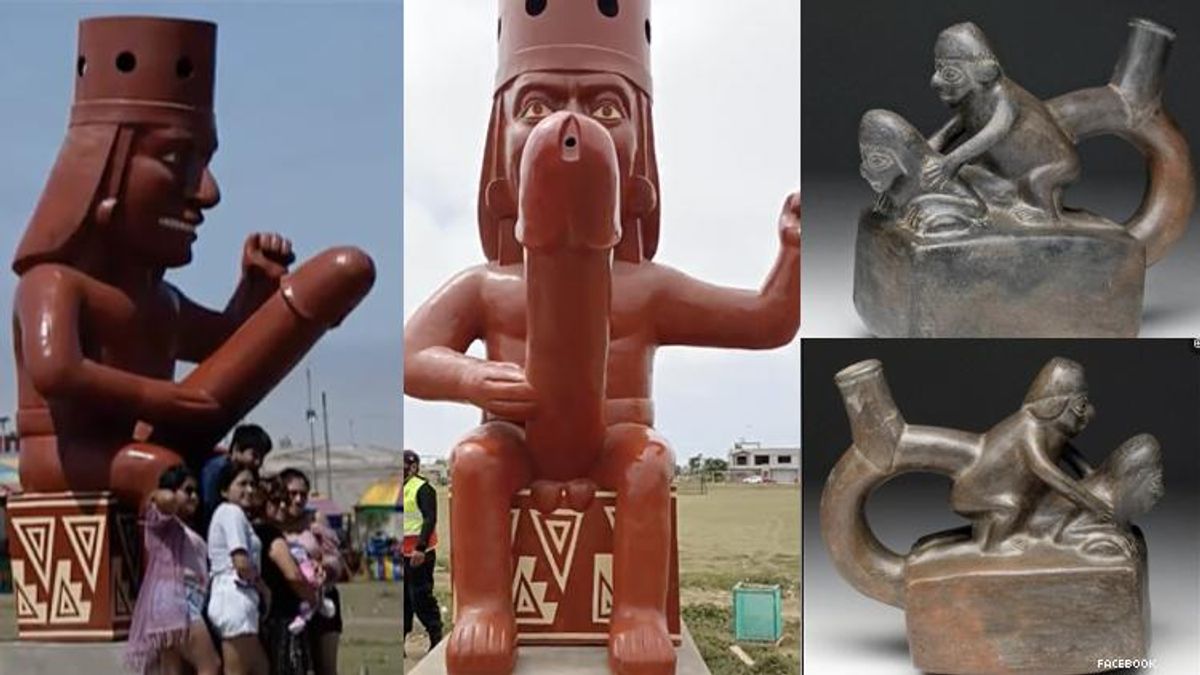News
Vandalized Phallus Statue Starts Discussion of Peru’s Queer History

By continuing to use our site, you agree to our Private Policy and Terms of Use.

A recently erected statue of a smiling man with a giant phallus — reflecting ceramics from region’s pre-Columbian Mochia culture — has been vandalized. The fiberglass statue is already Instagram-selfie magnet, and it’s sparking new conversations about Peru’s LGBTQ+ ancestors.
The Mochica people lived in what is now northern Peru, between 150 and 700 AD.
Located just outside the regional capital, Trujillo, on the route between the Huacas del Sol y la Luna (ancient temples of the sun and the moon), the statue draws numerous passers-by and tourists who pose beneath the oversized member. The 9 foot-tall fertility symbol was attacked by vandals who smashed a hole in the phallus and reportedly fired shots in the air as they left.
According to The Guardian Arturo Fernández Bazán, the mayor of Moche, a district named after the ancient culture, told local media: “At two in the morning three hooded criminals held a knife to the security guard’s neck to keep him from reacting or calling his colleagues on the radio, and two of them damaged the phallus.”
The roadside monument reflects the sexually explicit (and queer-inclusive) ceramics the Mochia culture is renown for. The mayor, Fernández Bazán, intends to add dozens of additional representations of the ancient culture, up to a third reflecting erotic acts or childbirth.
The statue, and its destruction, is also bringing renewed interest in the queer lives that are reflected in the surviving pre-Columbian ceramics of the region.
In 2020 the Facebook group Queer Art posted about the homoerotic art, like this vessel representing anal sex.
The municipality of Moche’s official Facebook page has also shared videos addressing the new statue and it’s reflection of the ancient Peruvian’s acceptance of sexuality and honoring of fertility.
One video is a piece about the Mochican culture’s representation of homosexuality in ceramics. The narrator, Hugo Chugo notes that “lesbian coitus and gay male coitus” were frequently reflected in the ceramics of the era, but most were destroyed by Spanish colonizers as part of a religious purge that was particularly intent on eliminating representation of queer acts.
In another video post shared by the municipality, a woman holds up an example of the sexually explicit ceramics. She says that although some may condem these representations because modern Peru is a conservative Catholic country, the images are meant to represent fertility, abundance, and the joy of life. She argues, these ceramics should be celebrated and respected as part of Moche culture – and human sexuality.
Want more breaking equality news & trending entertainment stories?
Check out our NEW 24/7 streaming service: the Advocate Channel!
Download the Advocate Channel App for your mobile phone and your favorite streaming device!